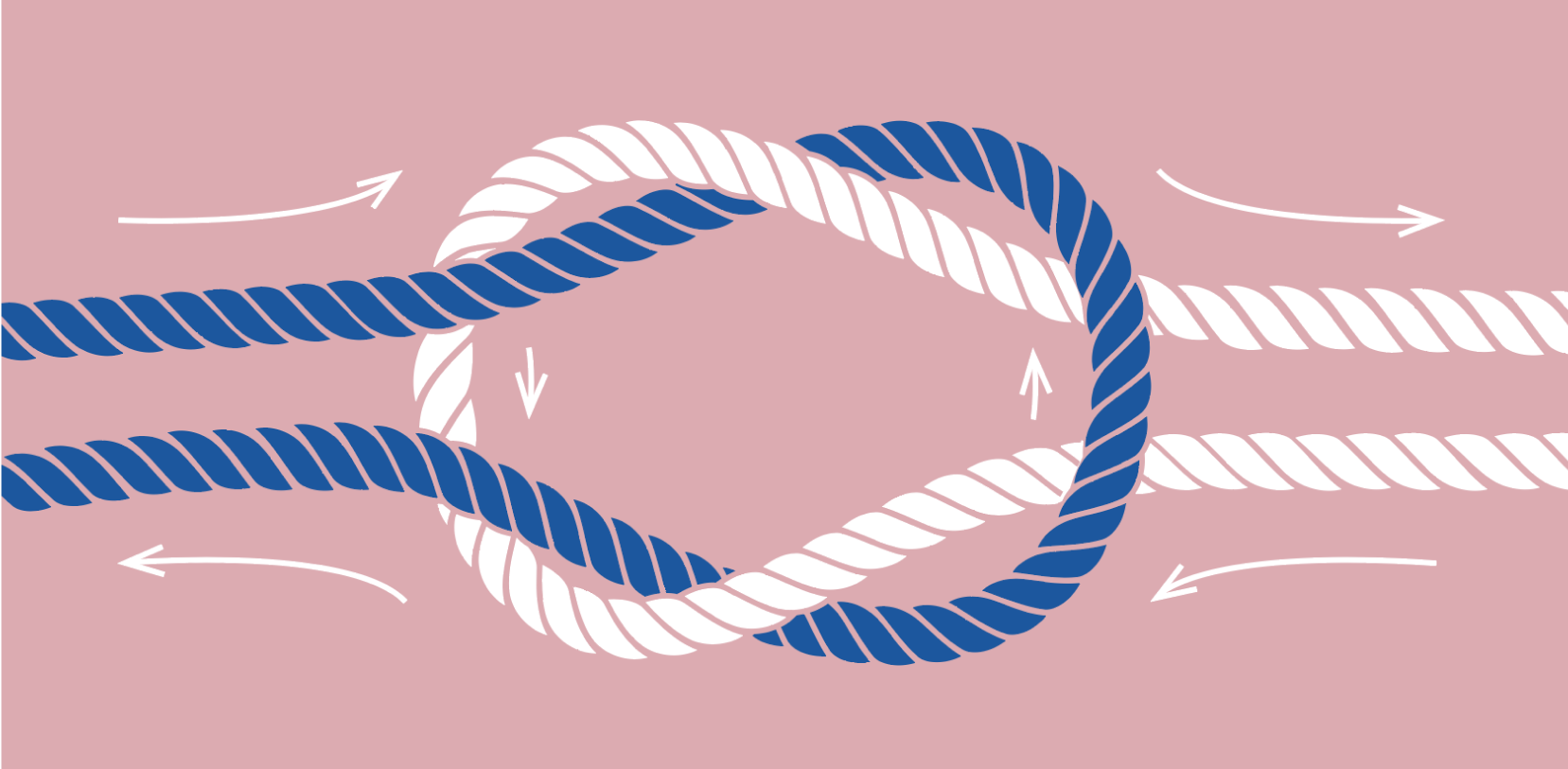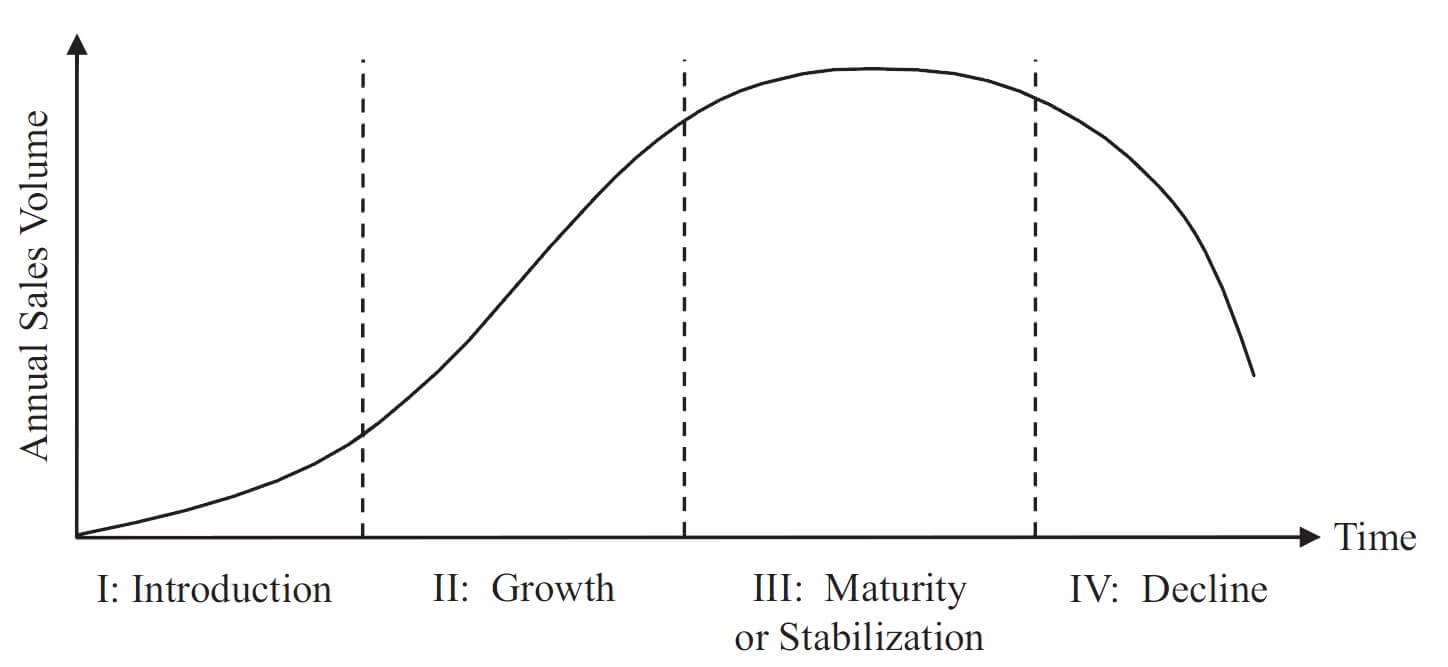Product life cycle is a term used to describe the stages of creation, growth, and retirement that any product goes through as it makes it way to and through the hands of its users. The traditional stages are a product life cycle are development, introduction, growth, maturity, and decline.
The product life cycle lives mainly in the hands of Product Managers and marketing teams. Marketers and Product Managers use the stages of a product life cycle for related, but different reasons. Marketers use product life cycle to create marketing strategies that will reach a broad audience of consumers, to brand as well as to determine product pricing. Product Managers use product life cycle to evaluate development resources, investment and maintenance in a product or feature.
The product life cycle stages
Ideation
Ideation is the informal beginning to the product life cycle. It begins with an idea that is formed into a concept. Ideation is the process that includes evaluating the goals for the new product, market fit research, market demand, competitive analysis, usability research, potential revenue opportunity, and potential costs. Many parts of the organization are typically included at this stage including Marketing, Product, Engineering, Design, and the organization’s leadership.
Development
Development begins after market demand is assessed and ideation has resulted in a formalized plan for a new product. Artifacts of the development stage include final designs, written requirements, and acceptance criteria. Engineers, Product Managers, UX Designers, QA Analysts are typically the main contributors at this stage. Marketers find themselves in the strategy stage as the product enters development and they begin planning market positioning and pricing for the Introduction stage.
Introduction
Introduction begins after development is complete. In an Agile framework, “complete” can be relative and introduction would begin as soon as a workable product is available for use. At this stage, the market will be introduced to the product for the first time. Many times, marketers take the lead in introducing the new product to the marketplace based on the strategy they created during the development phase. The introduction strategy includes which segment of the market they intend to reach, what channels and ways of advertising will be used to introduce the new product, and what messaging will be used when marketing to consumers.
Growth
Growth is the stage where customers are adopting the new product. Product adoption is continuing to rise and profits increase. Sales teams may even be incentivized to sell the new product prospects and existing customers. Development teams are typically continuing to make changes and enhancements to the product throughout the growth stage. Teams are monitoring the product for the achievement of the goals they set during ideation. The product is still receiving investment in the form of marketing and development efforts.
Maturity
Maturity is reached when product adoption is no longer growing at an exponential rate and has reached its market saturation. Teams may decide to continue to invest in the product in order to remain competitive, or they may leave it unattended while they focus on other earlier stage product efforts. Many times at the maturity stage, the product is receiving at least minimal development for maintenance but marketing efforts have become minimal.
Decline
Decline is when the market no longer needs the product in the same way that it did during the earlier stages of the product life cycle. Customers are leaving the product and sales are likely declining. Many teams decide to stop supporting the product during the decline stage and they will abandon the product or they may decide to remove it from the market altogether. This happens when customer usage declines to a low percentage of the overall customer base. Some teams may reinvent the product at this stage by adding new features, finding new market segments for the product, or repackaging the product to allow for new marketing efforts. Whether the product is abandoned or reinvented, letting a product reach the decline state allows the team to focus on the product life cycle all over again.
The importance of managing a product’s life cycle
Understanding the product life cycle is critical for both product and marketing teams, as well as the broader organization. The stages help teams understand what level of investment a product should be receiving, which products in a company’s portfolio should have the most focus and investment, and which products have the most opportunity for growth, revenue, and profit. Life cycle management impacts many teams in the organization, most notably sales, marketing, and product development. The product life cycle framework helps teams make tough decisions about existing products while helping new ideas grow.

















